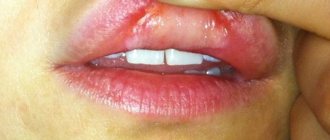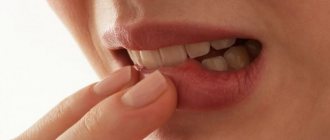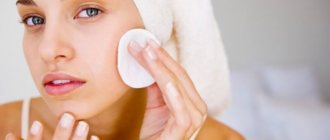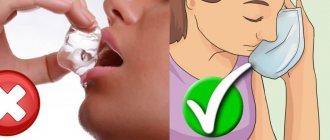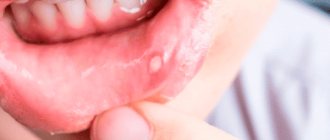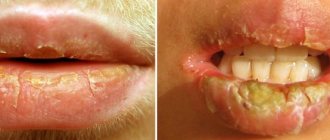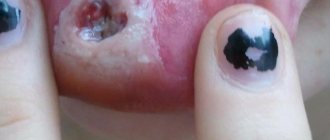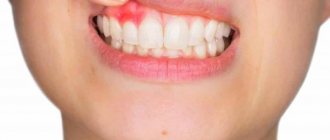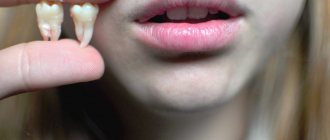One of the most sensitive and delicate parts of the face are the lips. Due to poor protection due to the location below the face and the constant performance of any functions (contact with food, objects), they are most susceptible to various types of damage. A burn can occur due to exposure to a chemical or thermal irritant. The consequences of this are far from pleasant. The person begins to experience discomfort, and the pain intensifies with eating. The appearance suffers, which causes, in addition to physical damage, psychological damage.
Classification and symptoms of burns
The main classification of lip burns is based on the source of injury. They are divided into two main types: thermal lip burn and chemical lip burn. Each type of burn has its own specific symptoms, knowledge of which will help in choosing the most appropriate effective treatment at a particular stage of damage.
Thermal
Thermal burns occur much more often than chemical burns, since they can be encountered in everyday life. The most common causes of thermal household burns include injuries during cooking and eating. Thus, those people who periodically taste hot food during cooking in order to determine the degree of its readiness, and also due to impatience when they want to eat or urgently run on business, have to suffer.
Chemical
Most often, damage occurs during self-treatment of pathological processes (throat, sores on the lips) at home using iodine, alcohol and other means. This problem occurs quite often in dentistry, since some substances used for dental treatment can cause burns to the mucous membrane.
It is not uncommon for chemical burns to occur in the dentist's office. This can happen due to the inexperience of the doctor, as well as due to the carelessness of the patient, who moves his head at the wrong time or closes his mouth while the specialist is working with chemicals. You can get a lip burn not only when visiting the dentist, but also when opening bottles with ammonia, alcohol and other aggressive medications.
Burn on the lip: types and treatment
Human lips are sensitive and easily damaged. A burn on the lip can be caused by heat or chemicals. The damage is accompanied by a burning sensation, and in severe cases painful blisters appear. A person needs competent help and treatment.
Symptoms
Damage to the lips of a thermal and chemical nature has pronounced signs. Symptoms appear immediately after the burn. The victim has:
- irritation and redness;
- swelling of tissues;
- acute pain and burning;
- formation of small blisters or scabs.
Doctors distinguish 3 degrees of injury, each of which has distinctive features:
- the first is mild, manifested by redness and slight swelling. The person complains of pain, the temperature rises in the affected area;
- the second is average. You are concerned about a strong burning sensation, the lip swells, bubbles with liquid form, minor wounds and cracks may form;
- the third is heavy. The deep layers are affected. The skin dies and open wounds appear. If an infection gets into them, pus begins to accumulate. The throbbing pain does not go away for a long time, the mucous membrane swells.
Kinds
Having studied the statistical data, you can be sure that the cause of burns on the lips is most often thermal and chemical damage. They can be superficial, when only the outer layer of the skin is affected, and deep, leading to tissue necrosis.
Children are often injured if they try an aggressive liquid or sip hot tea. The mucous membrane of a child is more delicate than that of an adult, so its integrity is damaged more quickly.
Sometimes the skin on the lips is damaged by exposure to sunlight. Redness, burning and swelling appear. The sore spot needs to be cooled and a compress made from fermented milk products or cooled green tea. These products are safe if ingested.
Thermal burn
Such damage is a consequence of exposure to high temperatures. Painful marks on the lips are often left by contact with:
- boiling water;
- hot steam;
- hot metal objects.
Trauma usually occurs in the home. During the cooking process, housewives taste the dishes and can burn not only their lips, but also their tongue.
Smokers are prone to such thermal burns, especially those who prefer unfiltered cigarettes. Serious damage can easily occur during depilation of hair above the lip: using hot wax for the procedure, there is a risk of not calculating the temperature and causing a slight burn, accompanied by redness and burning.
It has been proven that contact with temperatures above 41 degrees causes damage to the lips. The depth of damage is affected by the duration of exposure. The longer the contact occurs, the stronger and more extensive the cells are destroyed.
Chemical burn
Burns from chemicals are very dangerous. It provokes acute pain and damages the integrity of the skin down to the deep tissues. The characteristic feature that distinguishes it from thermal injury is the absence of blisters. The affected area becomes inflamed and covered with a scab. If cracks form, ichor flows out of them and painful wounds form.
Chemical burns to the lips occur when using low-quality cosmetics or carelessly working with acids and alkalis. Sometimes damage occurs after disinfection of wounds on the lip:
- iodine;
- concentrated solution of potassium permanganate;
- salicylic acid;
- alcohol;
- brilliant green.
Often injuries are caused by people’s carelessness and failure to follow safety rules. For example, when a cork closing a bottle containing a caustic substance or medicine is removed with the teeth. Such actions lead to chemical contact with the skin and damage it. Dangerous reagents are:
- acetic acid;
- hydrogen peroxide 35%;
- boric alcohol;
- ammonia;
- lemon acid.
Chemical burns should not be underestimated. Some substances continue to damage the skin for several hours. The reagent must be properly neutralized, otherwise the affected area expands and this leads to dire consequences.
First aid
The first aid mechanism for different types of burn injury has its own characteristics. If you receive a thermal injury, you should:
- Rinse your lip with cool water for at least 15 minutes. The procedure can be stopped after the pain disappears;
- treat the inflamed area with Furacilin solution;
- apply a healing agent, for example, Panthenol.
If bubbles have formed, they must not be pierced. You need to carefully apply the ointment and cover with a sterile bandage.
When severe pain occurs, it is permissible to take a pain reliever for any type of burn. These may be Paracetamol, Nurofen, Analgin, Ibuprofen.
It is recommended to rinse a chemical burn on the lip with cool water and rinse the mouth thoroughly - the aggressive substance could get there. Then you need to start neutralizing the chemical:
- Alkaline burns should be treated with a slightly acidified liquid. To prepare it, a spoonful of vinegar is diluted in 0.5 liters of boiled water.
- Acid burn reduces its aggressive effect after washing with a soda solution: for 0.5 liters of water - a teaspoon of powder.
If an injury occurs as a result of contact with slaked lime, you cannot use ordinary water to remove the substance! You need to prepare a 20% sugar solution and apply a lotion to the injury site.
Treatment
If a burn appears on the lip, consultation with a doctor is required. Therapy depends on the extent of the injury and the depth of the lesion.
Light to moderate injuries can be treated at home. Healing in severe cases should occur in a hospital setting.
Medication
The therapy regimen is aimed at eliminating pain, regenerating damaged cells and preventing infection.
Unpleasant sensations can be relieved with lotions from a lidocaine solution. To treat damaged areas, ointments and creams with regenerating properties are used. To get rid of a slight burn on the lower and upper lip:
- ointments based on dexpanthenol;
- balm Rescuer;
- Sudocrem;
- La Cree.
If blisters form, antibiotic therapy is required. Accelerate healing and prevent inflammation:
- Levomekol;
- Biopin;
- Levosin.
Before applying the drug, the injury site should be disinfected. Chlorhexidine or Miramistin are suitable for this. Then you need to soak a sterile napkin with ointment and apply it to your lip. Repeat the treatment 3-4 times a day.
Folk
It is useful to combine non-traditional methods with drug treatment. Herbal lotions quickly relieve inflammation, eliminate swelling and pain.
To prepare the infusion you can use:
- St. John's wort;
- chamomile;
- calendula;
- yarrow;
- plantain;
- burdock.
You need to measure out a tablespoon of dried raw material and brew it in 250 ml of boiling water. Cover the container with a towel and leave for half an hour. Strain, soak natural tissue in the liquid and apply to the lip for 30 minutes. Repeat 3 times a day.
Fresh burdock and plantain leaves make effective compresses. Washed plant stems need to be chopped in a meat grinder, wrapped in gauze and applied to the burn. It is advisable to keep the compress for several hours.
Homemade healing ointment has high healing properties:
- a spoonful of sea buckthorn oil should be heated, cooled and poured into a glass container;
- pour in enough crushed chalk to form a homogeneous paste;
- lubricate the damage with it three times a day until recovery.
During treatment you need to follow a diet. Refuse spicy, salty, spicy foods, avoid hot foods and rinse your mouth with chamomile infusion or an antiseptic after each meal.
Source: https://ProTravmy.com/ozhogi/na-gube
Severity
- Stage I is characterized by short-term contact with a chemical or thermal substance. There is mild inflammation, redness and increasing pain. Slight swelling occurs and body temperature rises.
- Stage II includes all the symptoms of stage I, but with the addition of blisters at the site of the lesion. After the blisters open, ulcers form, the dried surface of which will begin to burst and bleed.
- Grade III is characterized by a large area of damage. The resulting ulcers increase in size and depth, the tissue begins to die with the appearance of purulent discharge. The pain becomes unbearable and painkillers are indispensable. The swelling is combined with an inverted red border of the lips, reminiscent of a fish mouth.
Sunburn on the lips - what to do?
If you stay outside on a hot day without special protection in the form of hats, creams and balms with a high degree of SPF, you can get injured from exposure to ultraviolet rays. And since the skin on the lips is too delicate, it is affected first.
In this case, the symptoms are manifested by swelling, redness, a burning sensation, a feeling of tightness, and peeling. With severe damage, blisters filled with clear liquid appear.
To eliminate discomfort, you can apply a cloth soaked in cold water. But it is forbidden to use ice, since sudden changes in temperature only worsen the condition of the skin. Also, lip burns from the sun are treated with special ointments based on B vitamins and pantothenic acid with an anti-inflammatory and regenerating effect. Ozone gel is used in a similar way. It is applied to the affected area several times a day.
Video: how to restore lip skin?
First aid
In case of a thermal burn of the lips, it is quite possible to provide first aid to yourself without turning to specialists. It is necessary to carry out a special set of measures.
In case of a mild thermal burn, the lips are thoroughly washed under cold water, which will help relieve inflammation, alleviate pain and reduce swelling. For therapeutic purposes, sometimes a compress of chamomile decoction is applied and the surface is treated with ointment with a healing and disinfection effect. For more serious burns (with the appearance of blisters), you should stop using chamomile compresses.
Opening the bubbles yourself is strictly prohibited. Instead, it is better to use a spray that disinfects the surface of the skin. Often, lotions are made from Novocaine or Lidocaine as an anesthetic, although you can get by with tablets.
First aid for a chemical burn consists, first of all, of eliminating the aggressor. If the burn was caused by an acidic substance, then it must be treated with alkali, and, accordingly, vice versa. After treatment, rinse the affected area thoroughly with cold water for twenty minutes. In case of injury from an unknown solution, water with sugar, lotions and an anesthetic bandage with Analgin or Novocaine are excellent.
Lip burn: types, degrees of burns and treatment
Lip burns can occur due to exposure to chemicals, sunlight, or exposure to high temperatures ( thermal burns ). As a rule, such injuries are associated with acute pain, particular discomfort and aesthetic disturbances.
The eyelids and lips are rightfully considered the most sensitive areas of the face. Due to the thinnest upper layer of the epidermis and the openness of these zones, they are at a special risk of injury.
Thermal burn of the lip
Often the most common household burn is a thermal burn of the lips. If the oral cavity has been burned due to exposure to open fire, hot objects, steam or boiling water, then you need to be able to immediately provide first aid. Subsequent treatment for thermal burns of the lips may vary, depending on the extent of the damage.
Lip burn: first degree
It is the easiest and most harmless form of lip burn. In such circumstances, the purely upper layer of the epidermis becomes inflamed, and the following symptoms appear:
- pain;
- edema;
- burning;
- hyperemia of the epidermis;
- Bubbles of liquid may appear.
If the internal mucous membranes of the lips are damaged due to a burn, you should immediately rinse your mouth with cold water. Further treatment of lip burns will consist of applying compresses with aloe juice or chamomile decoction, as well as lubricating the lips with depanthenol-based ointments. If the latter are not at hand, then you can smear your lips with honey. First-degree lip burns are treated with depanthenol-based ointments
In addition, when a person burns his lips with boiling water, you can make lotions from vegetable juices (potatoes, pumpkin, carrots), and if the thin mucous membrane of your lips is burned and blisters appear, then it is better to use special disinfecting sprays.
Lip burn: second degree
Such a burn of the lips by boiling water, steam or a hot object is considered to be a moderate skin lesion. With the second degree, the appearance of blisters and swelling can be observed much more often than with the first. It is strictly forbidden to open blisters or squeeze liquid out of them, as this can lead to serious infection.
As in the previous case, first aid boils down to cooling the burned surface under cold water, and then applying alcohol-free antiseptic agents (hydrogen peroxide, iodopyrone solution) to it. This will help avoid inflammation and infection in the wound.
If possible, apply a compress with ointment (for example, Panthenol) to the affected lip. If there is a severe burn inside the lips (mucous membrane), it is recommended to take a painkiller and go to a medical facility. Unfortunately, burns of this degree require qualified assistance and long-term specific treatment.
Lip burn: third degree
With such a degree of trauma, deeper damage to the layers of the skin occurs, up to muscle damage. This type of tissue burn is also accompanied by the appearance of blisters, but they are much larger and often filled with pus.
What should you do if you have a lip burn like this? In this case, immediate consultation with a doctor is required. On your own, you can only muffle the pain syndrome with painkillers and treat the affected area with an antiseptic.
It is very important not to apply oily products to such burns, since oils only promote the proliferation of pathogenic microorganisms.
Thus, sea buckthorn oil, popular in folk medicine, can be used only at the final stages of therapy, when the blisters have already dried out and healed.
And at the beginning of treatment, anti-inflammatory and anti-purulent drugs are often used, but both of them are prescribed only by the attending physician, and all therapy is carried out under his supervision.
Lip burn: alkaline solution
So, people making a neutralizer must remember that an alkaline solution is formed by diluting soda, ammonia or liquid soap with water, and an acidic solution is formed by dissolving citric acid or vinegar.
You can also try to wash away toxic substances as much as possible with cold running water. The only case when this should not be done is in case of a burn with quicklime. In this case, the damaged area is treated with a 20% sugar solution.
To reduce pain until the victim reaches a medical facility, you can use bandages with a solution of lidocaine or novocaine. Unfortunately, treatment of chemical burns is quite lengthy and can take 1-2 months.
Lip burn: sunburn
With prolonged exposure to the sun, in particular, in the wind, you can get a fairly severe burn to your lower or upper lip. Often, symptoms do not appear immediately, but after the cessation of exposure to sunlight. Characteristic signs of such a burn:
- burning;
- swelling;
- peeling;
- feeling of tightness of the skin of the lips.
Occasionally, even blisters may appear. But how to treat sunburned lips? First you need to apply a cloth soaked in water to them. Within a quarter of an hour, such a compress will reduce pain and swelling. However, it is forbidden to apply ice to your lips, as this will only make the situation worse. Next, you should apply ointment to the affected areas.
A cold compress, not ice, is first aid for sunburn.
How to treat?
It is also necessary to become familiar with the methods of treating burns. According to the recommendations of doctors, such injuries can be treated independently at home, while performing a set of measures aimed at healing the skin tissue:
- in cases of minor damage, an ointment with a healing and regenerative effect (Panthenol or its analogue) is usually prescribed,
- in a more serious case (with the appearance of blisters), treatment with an antiseptic before eating is indicated,
- in case of such injuries, it is necessary to remove spicy, sour, hot foods from your diet during treatment, which can irritate the mucous membranes,
- In extreme cases, if ulcers appear or tissue necrosis develops, you should immediately consult a doctor.
There are also quite effective folk methods of treatment:
- the affected area can be lubricated with thick sour cream or other dairy product,
- without resorting to painkillers, you can anoint the lesion with raw egg white,
- aloe pulp and juice are used to relieve swelling and irritation - they are good for tissue inflammation,
- sea buckthorn oil moisturizes, relieves pain and helps in tissue regeneration,
- Potato lotion and carrot juice are very effective,
- a lotion of freshly brewed tea (for convenience, use in bags).
How and with what to treat different types of lip burns
Lips are one of the most sensitive and delicate areas on the human body. They are covered with a thin layer of skin, under which a large number of nerve endings and blood vessels pass.
Therefore, a lip injury is always painful and accompanied by bleeding . Lip burns occur quite often.
They not only cause intense pain, but also pose a certain danger to human health.
Photo 1. Lip burns are always painful and traumatic. Source: Flickr (Kodey Kluesner)
Causes of lip burns
The lips consist of cutaneous, intermediate and mucous parts. The skin part does not differ from other areas of the face and is located above the red border of the lips, the mucous membrane is located on the threshold of the mouth.
The intermediate part (red border) is most susceptible to injury and burns. The epidermis here is very thin, it is almost devoid of the stratum corneum, which protects the skin from harmful environmental factors.
The main cause of lip burns is careless handling of hot drinks . Thus, damage can occur when trying to drink freshly boiled tea, coffee, or water.
In addition, some mixtures that are not suitable for drinking can cause a burn if they come into contact with the lips. For example: acids and alkalis. Drops of them may end up in the oral area of the face accidentally when working with a substance or intentionally when acting with the intent to cause harm.
In addition, it is possible to get a sunburn on your lips on the beach in the summer if you do not take precautions and do not protect your lips from ultraviolet radiation.
Note! The danger of thermal and chemical burns to the lips is that the substance can enter the oral cavity, causing a burn to the mucous membrane of the mouth, and then the pharynx, esophagus, stomach, and sometimes the larynx and trachea. Such burns are life-threatening and very difficult to treat.
Types of lip burns
Depending on the mechanism of tissue damage, thermal , chemical and sunburns .
Chemical
There are two types of substances that most often cause burns - acids and alkalis . Any acid, like any concentrated alkali, can cause tissue damage. When an acid burn occurs, a wound surface with dried blood appears. Such a burn, usually limited, corresponds to the place where the substance came into contact with the skin of the lips.
Alkali burns are more dangerous . Body tissues normally have a slightly alkaline environment, so nothing prevents the spread of alkali. Such burns are usually larger in area and depth than acid burns. If concentrated solutions of alkali or acid come into contact with the skin and mucous membranes of the lips, there may be through-and-through damage to the lip with complete dissolution of the tissue.
Thermal
Such burns are rarely deep . When lip tissue is damaged by hot drinks, a first or second degree burn occurs.
If an open source of fire, hot metal or other objects whose temperature exceeds 50 ° C are brought to the lips, the damage can be comparable to a chemical burn. However, such situations are extremely rare.
Note! The degree of burn to the lips is no different from the degree of any other burn.
Solar
Such injuries occur in the summer. For example, if a person went to the beach closer to noon, he did not use lip protection against ultraviolet ultraviolet radiation. Often, even when applying protective cream to the skin of the body and face, many people forget about protecting their lips .
Photo 2. Lips, like other parts of the body, require protection from ultraviolet radiation. Source: Flickr (Kenga86)
It is important! It is worth remembering that the skin of the lips has the least pronounced stratum corneum and has almost no melanin, which makes it sensitive to ultraviolet radiation. Such burns are accompanied by redness and inflammation of the lips, and then the formation of a dense crust that tightens the skin like a pouch.
Signs of injury
Symptoms of injury depend more on the extent of the burn than on its cause. There are several degrees:
- First . Only the surface layer of the epithelium is damaged. The lips become red and swollen, sore, sometimes cracked, and opening the mouth may be difficult.
- Second . All layers of the epithelium are damaged, blisters with a light opalescent liquid appear. The pain is more intense, it is difficult to open the mouth.
- Third . All layers of the skin are damaged, including connective and adipose tissue. The pain is very intense, the wound surface may be saturated with blood or oozing exudate.
- Fourth . In addition to the skin, deeper layers are damaged, including muscles and oral mucosa. Such burns can be through, their surface looks charred. There is no pain or bleeding.
Thermal burns always have this classic picture. Solar and chemical ones, in addition, can be covered with a dense crust (scab).
Treatment of lip burns
Treatment depends on the degree of tissue damage and the nature of the injury.
Thermal burns
Superficial burns may not require special treatment. The main thing is to moisturize your lips with panthenol cream or hygienic lipstick. Bubbles cannot be pierced, and crusts cannot be removed. In this case, the tissues heal on their own under the covering of the bladder.
For deeper burns, wound healing ointments with an antiseptic, antibiotic or silver ions are used. In case of a fourth degree burn, it is necessary to undergo surgical lip surgery, since such injuries are not able to recover on their own.
Treatment of a chemical burn
The treatment of such a burn is no different from the treatment of thermal damage. Scab crusts also cannot be removed on your own, as they protect deeper tissues from infection. When burned by acids or alkalis, plastic surgery is required in a greater number of cases.
Folk remedies
It is worth remembering that immediately after receiving a burn, you cannot lubricate it with oil, alcohol, or apply soda or salt to it. Folk remedies for shallow burns can be used aloe juice or cold chamomile decoction . You should lubricate your lips with them several times a day.
Prevention
The main prevention of burns is lack of contact with the irritant . Avoid very hot drinks and always wear a protective mask when working with aggressive chemicals.
In the summer, it is necessary to apply lipstick with UV protection or a special cream to your lips.
Source: https://glavtravma.ru/ozhogi/guby-151
Preventive actions
The types of burns discussed can be easily prevented. To do this, you need to be more attentive to yourself and your children. Everyone knows that babies are very curious, so all household chemicals should be kept out of their reach. For preventive purposes, adults should not open bottles with chemicals using their teeth. In addition, you need to take your time when eating hot food; it is important to monitor its temperature so as not to harm sensitive tissues.
Traditional methods
If you don’t have the necessary pain relief and first aid supplies in your home medicine cabinet or at hand, you can use alternative medicine recipes:
- Apply a cooled decoction of medicinal chamomile to your lips.
- Ordinary honey acts as an excellent antiseptic and pain reliever. It can be smeared on the affected area and left for half an hour. The bee product relieves inflammation well, eliminates flaking, and restores the elasticity and firmness of the epidermis.
- You can reduce the unpleasant symptoms of a minor burn with the help of freshly squeezed vegetable juices. Vegetables such as potatoes or pumpkin are suitable for this.
- Aloe juice has long been considered a good regenerating agent.
- For sunburn, fermented milk products (kefir, sour cream) are often used. You can spread them not only on the skin all over the body, but also apply a thin layer on the lips.
Prevention
The main preventive measures are:
- take care of your lips and use high-quality hygiene products and cosmetics;
- be careful when handling fire, hot objects and boiling water;
- be careful when using products containing chemical components;
- keep an eye on children;
- have first aid medications (Spasatel or Panthenol) in your home medicine cabinet.
A lip burn is not the most dangerous type of injury, but it causes severe pain and discomfort when talking and eating.
Recovery depends entirely on the nature, scale and specificity. Mild to moderate burn injuries most often disappear within a week without leaving any traces. After severe burn injuries, scars or deformation of the shape of the lips are possible, amenable to plastic surgery.
First aid and further treatment
A lip burn is a condition that requires immediate first aid. The approach to first aid is individual, depending on the factors under the influence of which the burn occurred.
Usually, to clarify the diagnosis, it is enough to collect an anamnesis and conduct an examination. In cases where a child has been injured, diagnosis is somewhat difficult. Despite this, the first priority in providing first aid is to thoroughly rinse the affected area under running water for 15-20 minutes. If it is known that the cause of the injury was quicklime, then it is more advisable to wash the burn site with a twenty percent sugar solution.
In the case of a chemical burn, the next step is neutralization - the effect of an acidic environment on an alkaline burn, and vice versa.
The final first aid point is (lotions with a solution of novocaine, analgin).
Further treatment is carried out depending on the degree of damage:
- For thermal and chemical burns of the first degree, applications of chamomile decoction and the use of healing ointment are recommended.
- Second degree damage requires medical intervention when blisters appear, the opening of which takes place in the presence of a doctor. Antiseptics and wound healing ointments are prescribed.
- Third degree damage is treated in a hospital setting under the supervision of medical personnel. Painkillers, anti-inflammatory, antiseptic and healing drugs are used.
Increased attention and accuracy when working with chemicals (during their storage), with high temperatures, as well as knowledge and ability to provide first aid will help you avoid burn injury yourself and protect your children.
What to do for burns of the mouth, lips, throat in children and adults from boiling water and hot drinks. What pharmaceutical and folk remedies to use. When to call a doctor.
I took a sip of hot tea, took a spoon with soup that had just been removed from the heat into my mouth - it became unpleasantly baked, it hurt, and then the skin began to peel off from the roof of my mouth. This is a common situation that has happened to everyone, more than once. However, few people know how to behave in case of burns to the lips, mucous membranes of the mouth or throat.
Types of burns
Burns lead to the destruction of skin cells and mucous epithelium that covers the inner surface of the lips. Injury occurs when contacting:
- chemicals - acids, alkalis, lime;
- high temperatures - boiling water, hot objects;
- radiation - ion or light radiation.
The greatest danger is chemical burns. In 35-40% of cases they are complicated by infectious inflammation, which prevents the tissues from healing. Damaged lips with bleeding wounds worsen the quality of life. A person cannot eat properly or communicate with others. Severe burns cause problems breathing and sleeping.
Symptoms and causes of burns
A lip burn appears instantly, and it is not difficult to notice it, namely:
- sensations of pain of various types;
- swelling of the affected area;
- severe burning and itching;
- violation of the integrity of the epidermis;
- bubbles with liquid of various sizes.
Burn damage to the lips occurs due to exposure to high temperatures and chemical components, namely:
- acids;
- alcohol-containing liquids;
- alkalis;
- boiling water;
- scalding air;
- hot steam;
- hot metal objects;
- flame;
- cigarettes;
- hot food;
- sultry sun.
First aid algorithm
If lips are injured by chemicals or boiling water, it is necessary to provide emergency assistance to the victim. The speed of tissue healing depends on the timeliness and correctness of actions.
Algorithm for providing first aid:
- Washing. For any type of burn, you need to wash the damaged areas of your lips with running water. The procedure should take at least 10 minutes.
- Neutralization of the reagent. If the burn is caused by alkalis, they are neutralized with a weak solution of citric acid. If acid gets on the lip, use a soap or 5% soda solution.
- Anesthesia. To eliminate the burning sensation, take an anesthetic drug - Nimesulide, Ketorolac, Nurofen, etc. To enhance the analgesic effect, the victim is given 1 tablet of Spazmex, Romazulan or Spazmalgon.
Treatment
Immediately after getting a burn, you should rinse your lips with cold water, it is advisable not to touch them with your hands (to avoid infection). An exception is chemical burns caused by elements mixed with lime (then water is replaced with a 20% sugar solution). Popping bubbles and tearing off dead parts of the skin is strictly prohibited. Acid burns are neutralized with pre-diluted alkaline mixtures, and alkaline burns, on the contrary, are neutralized with acidic ones. Further treatment should be provided by qualified specialists.
Treatment occurs in a conservative way through the application of local healing agents. The most commonly used ointments are: levomekol, rescuer, levosin. Before applying ointments, consult a dermatologist, carefully read the instructions and method of use. For severe pain, it is recommended to take analgesics, including paracetamol, tempalgin, analgin and other non-steroidal drugs.
Symptoms
Recognizing a lip burn is quite simple. After exposure to an unfavorable factor, the following signs appear on the surface of sensitive skin:
- pain at the site of injury;
- swelling of the skin;
- burning sensation on the lip;
- formation of watery blisters in the burn area;
- hyperemia of skin tissue.
According to the type of aggressor, lip burns are divided into thermal and chemical. According to statistics, people suffer most from burns from boiling water, chemicals and sunlight.
Thermal damage occurs as a result of the interaction of the surface of the lips with boiling water, hot objects, steam, sunlight or electric current. In most cases, along with a burn of the lips, traumatic damage to the palatal part of the oral cavity and tongue also occurs.
- The first degree is considered mild. After damage, swelling and redness form on the surface of the lips, and the victim feels slight pain. Such damage does not require contacting a medical facility, and to quickly eliminate the inflammatory and painful process, compresses from chamomile decoction are applied to the burn site. You can also use ointments after burns.
- The second degree refers to moderate severity. As a result of longer exposure to a thermal aggressor on the surface of the skin, watery blisters form on the lips, swelling of the damaged area occurs, and the victim experiences acute pain. As the watery blisters empty and heal, ulcers form in their place, which subsequently regenerate into skin tissue. Treatment of second-degree burn injuries requires medication. Do not open the blisters yourself or squeeze out the watery contents. The victim feels acute pain, so he needs to take a painkiller. Burn ointment is applied to the damaged surface. In addition, lips must be treated with any antiseptic to avoid inflammation and infections.
- The third degree is considered serious. All the above-described signs of a burn are accompanied by the release of purulent fluid from the blisters that have formed on the lips. Deep erosions subsequently form on the skin tissue, and tissue deformation occurs. Such damage can only be treated in a medical setting. As independent methods of treatment and to alleviate the painful and inflammatory process, it is permissible to make pain-relieving bandages and treat lips with antiseptic drugs.
We invite you to familiarize yourself with the difference between Cholisal and Cholisal Dental
